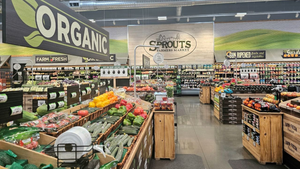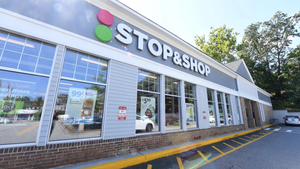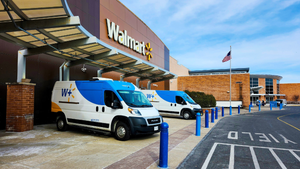KEEPING TABS ON LABOR COSTSKEEPING TABS ON LABOR COSTS
The antiquated handwritten labor-scheduling process used for years by supermarkets is giving way to a new generation of time-saving software solutions -- and for good reason.Labor is the single largest expense a retailer can control with best practices and improved efficiencies by using labor-scheduling software, industry sources told SN.Rather than relying on the gut instincts of managers about when
July 12, 1999
PATRICK SCIACCA
The antiquated handwritten labor-scheduling process used for years by supermarkets is giving way to a new generation of time-saving software solutions -- and for good reason.
Labor is the single largest expense a retailer can control with best practices and improved efficiencies by using labor-scheduling software, industry sources told SN.
Rather than relying on the gut instincts of managers about when the store is slow or busy, labor-scheduling software paints a more accurate picture of store traffic. Armed with this detailed data, retailers can allocate staff resources more efficiently.
One retailer told SN payroll costs were reduced almost 10% after the store used the software for only a short period. Another East Coast retailer said it saw a return on its investment in a labor-scheduling system within a month after the software was installed at its stores.
Some retailers are just testing the waters of automated labor-scheduling; others are expanding their use of the technology they have had in place for several years.
Some retailers are poised to use the software to schedule not only front-end staff but workers in such key operational areas as food preparation, deli, receiving and customer service.
Safeway, Pleasanton, Calif., is rolling out the technology to its 320-store Vons chain, based in Arcadia, Calif. "Our Vons stores will have the [labor-scheduling] software, and that's in the process of being implemented," said Safeway spokeswoman Debra Lambert. She added, "Other U.S. divisions of Safeway have had the software in the stores for some time."
Festival Foods, Mechanicsburg, Pa., a division of Fleming Cos., Oklahoma City, has significantly reduced payroll costs in the year since it installed software to schedule front-end labor in 16 of its stores.
In the last year, Festival has reduced its labor costs by 0.3% as a percentage of sales, said Roger Hensil, store manager.
"When you consider that's total sales, it's pretty significant," he added.
"I really think we paid for our investment within a month," Hensil said, noting the return on investment varies from store to store. "It doesn't take much work to save dollars on the front end. It's a great tool."
The retailer also has been able to reduce the time it takes to create weekly work schedules, to two to three hours rather than the six to eight hours it took to do it manually.
"I really think it's going to be the way to schedule labor in the future," Hensil said.
Before installing the new software, some Festival stores used a Lotus-based scheduling system that was developed by the retailer.
One of the value-added benefits of automated labor-scheduling, according to Hensil, is that Festival learned through the new software that it was doing a large late-night business that required more staff.
"We do a tremendous business [at] 2 o'clock in the morning," Hensil said, noting he adjusted staff work hours accordingly and had to dismiss some employees who could not work the new schedule. "There were significant changes in how labor was scheduled," he told SN. "Unfortunately, we lost some employees."
The software provides a fairly quick solution to a retailer's labor-scheduling problems, particularly for front-end operations, but to make it most efficient over the long haul, the system must be re-evaluated every few years, industry sources told SN.
"That's probably true," said Hensil. "For one thing, you change methods on the front end that often."
"You really need to go back and visit your standards and look at software every four or five years," said Tom Agan, a principal with Kurt Salmon Associates, Princeton, N.J.
He added the software must be able to accommodate changes in the retailer's business.
Agan believes retailers' use of labor-scheduling software will become more prevalent in the future.
"One common outlook is [it's] not if you're going to do labor scheduling, but when you'll do it," Agan said.
Agan said the software should be acquired through a technology vendor rather than developed in-house by the retailer.
"Scheduling software is very difficult to develop," Agan said, adding that it required a fair amount of sophistication and was "easy to mess up."
Giant Eagle, a Pittsburgh wholesaler and retailer, recently installed a new labor-scheduling system in 40 of its corporate stores in the Cleveland area.
The wholesaler is replacing the labor-scheduling software at its recently acquired Riser's Food Stores, which now operates under the Giant Eagle banner, according to John Giedl, director of training and development for Giant Eagle.
Giant Eagle, which has used the software for front-end operations at its own stores since 1996, has reduced payroll costs about 10%, he said.
"What it [the software] does is takes out a lot of the guesswork and better determine our labor requirements. It improved our bottom-line productivity and improved customer service," he said.
Prior to installing the scheduling software, Giant Eagle used a manual system, Giedl said, adding that some of Giant's independent operators had also used the software. "A lot [of our independent operators] were really excited about saving money," he said.
Giant Eagle stores that have the software are expanding its use to grocery and deli.
"Grocery will be done by end of the summer, and there is no timetable for deli," Giedl told SN.
Agan agreed with Giedl that the benefits of labor-scheduling software extend beyond front-end operations. Many retailers offer prepared meals, for example, which have a tight profit margin.
"When [retailers] get into preparing food, if they don't have tight control over labor costs, they're going to lose," Agan said.
He suggested consider using labor scheduling in other areas, such as receiving and customer service.
"Labor is the largest single controllable expense," Agan said.
About the Author
You May Also Like
.webp?width=300&auto=webp&quality=80&disable=upscale)



